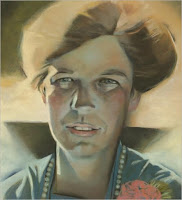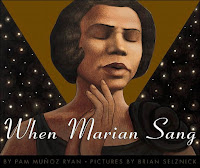So far, in this blog series, I’ve explored some distinct challenges facing nonfiction picture book writers including word count, language/word choice, and focus/angle. But that’s just the beginning. The more I study nonfiction titles in the pursuit of helping my own writing, the more I recognize the importance of theme.
In his best selling book, The Writer’s Journey: Mythic Structure for Writers, Chris Vogler defines theme as “…an underlying statement or assumption about an aspect of life.” Okay, so maybe that’s not the most kid-friendly definition, but it works.
Theme has been referred to as the story’s premise or the ‘aha’ factor that resonates with readers long after the plot and character fade from memory. Author, Barbara Kerley refers to theme as the “so what” of the story; the ultimate reason why we care about the people or events that populate our story. Peel back the layer upon layer of setting, detail, character, events and you should find theme at the core-the heartbeat of the story.
Whether fiction or nonfiction, theme should come organically from the character’s journey. Let’s face it, life is full of ups and downs. In fiction, once the author determines the theme, he/she can direct the story toward that pursuit. Nonfiction authors have a slightly different set of challenges. Our subject and events are real, presumably documented, and typically in the past. The author’s decision boils down to where we choose to focus our lens. For young readers, we have a responsibility to show some of our subject’s challenges and successes that led to their historical significance. The resulting theme speaks to human nature and human potential.
I contend that readers may gleam different themes from the same book, in part influenced by his/her own life experiences and the particular aspect of the story that resonates with them.
Let’s look at just a few examples from my shelves, including hints from both the jacket flaps, and from the texts themselves. By no means does this sampling cover the broad spectrum of themes, but it is an interesting study.
Harvesting Hope: The Story of Cesar Chavez, by Kathleen Krull (Harcourt, 2003)
Picture book biography about the man who championed civil rights for migrant farm workers
Thematic hints in the text, “He began to think that maybe there was hope. And in his early twenties, he decided to dedicate the rest of his life to fighting for change.” And, in Chavez’s own words, “It is well to remember there must be courage but also that in victory there must be humility.”
Possible themes: Hope, determination, standing up for justice, courage
Jacket Flap hint: “He knew things had to change. And he thought that-maybe-he could help change them.”
George Did It, by Suzanne Tripp Jurmain (Dutton, 2006)
When the American colonies needed George Washington, he stepped right up. But when they asked him to be president, George was, at first, too nervous to say yes.
Thematic hints in the text: “Nothing in his whole life, George said, filled him with “greater anxiety than the thought of being president.” And finally, after he is sworn in as president, “ He was still nervous about being president. But he didn’t have time to think about that now. There was a big important job to do. And the very next morning…George did it.”
Possible themes: vulnerability; taking risks; overcoming nervousness; patriotism; sacrifices; getting the job done.
Jacket Flap hint: “This book reveals a more personal side of our first president-a great leader who could also be a little nervous.”
When Marian Sang, by Pam Munoz Ryan (Scholastic Press, 2002)
One of the greatest singers of the twentieth century, Marian Anderson is most often remembered for the historic concert on the steps of Lincoln Memorial in 1939, but it was her dogged pursuit of her dreams that made her an accidental activist for civil rights.
Thematic hints in the text: After studying and performing abroad, she returned to America and was flatly denied performance venues.“Wasn’t there someplace in her own country’s capital where Marian Anderson’s voice could be heard?” Finally, “Examining her heart, Marian realized that although she was a singer first and foremost, she also had become a symbol to her people…”
Possible themes: overcoming racial prejudice; following one’s dreams; one person can make a difference; determination
Eleanor, Quiet No More, by Doreen Rappaport (Hyperion, 2009)
Eleanor Roosevelt was profoundly affected by her mother’s poor opinion of her and her grandmother’s indifference. She was born privileged but, “I never smiled,” she said. As she grew, however, Eleanor found her voice and directed it to advance many causes.
Thematic hints in the text: “Very early I knew there were men and women and children who suffered.” And “All through Franklin’s presidency, Eleanor spoke up for what she believed in.” And most importantly are Eleanor’s own words, “I have never felt that anything really mattered but knowing that you stood for the things in which you believed and had done the very best you could.”
Possible themes: standing up for what you believe in; conviction; etc.
Jacket Flap hint: Later, she became the most socially and politically active — and controversial — First Lady America had ever seen.
What other themes can be revealed through nonfiction picture books? How much time do you have to contemplate the whole of human experiences?
It’s worth adding additional title samplings to future posts. In the meantime, I encourage you to peel back the layers of your own books and find the thematic core.



